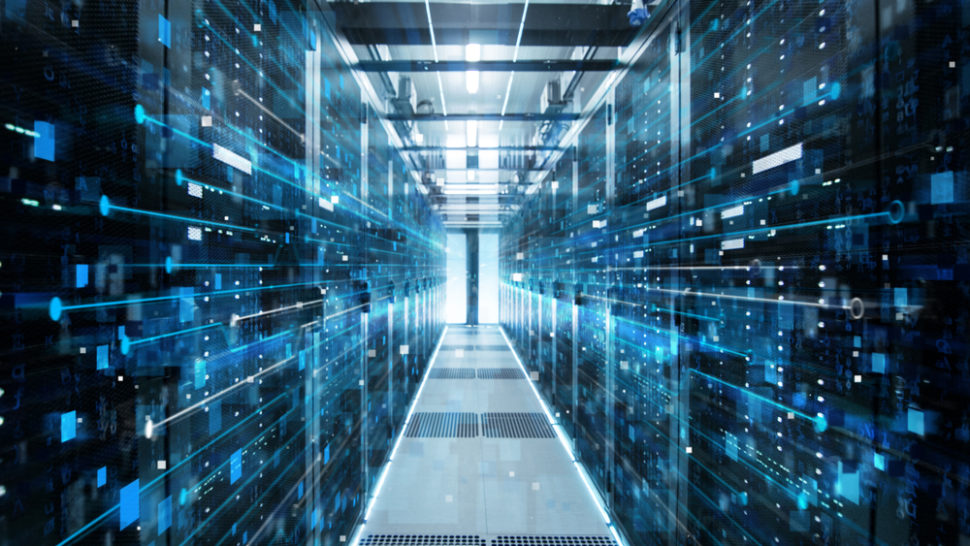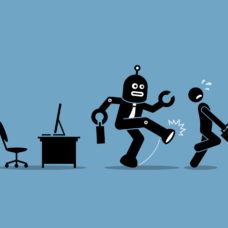According to 68 percent of AI experts, AI systems will possess human-level general intelligence by 2050.
The more pessimistic think Artificial General Intelligence (AGI), aka true AI, won’t arrive until after 2100, if at all.
Although they can’t agree on a timeframe for AGI arrival, scientists don’t question AI’s ability to perform intellectual tasks at a human-like level and beyond.
But what AI can do now? Below we’ve created a list for you of jobs that AI is already more than capable of mastering.
Read More: 6 Things AI can do now That it Couldn’t do Last Year
1. Diagnosing Diseases
In hospitals, professionals are already utilizing AI to personalize treatments, assist doctors and patients, and manage data.
But perhaps the most critical application of health AI is in medical diagnosis. This is where AI’s ability to recognize repetitive patterns really shines.
The health tech startup Verily, an Alphabet subsidiary, developed an AI system that predicts the risk of major cardiovascular events by just inspecting a patient’s eyes.
As described in their paper, Verily’s machine learning algorithm uses eye scans to look for cardiovascular risk factors. This method has about the same accuracy as existing methods.
Another AI software system that uses a similar approach is IDx’s IDx-DR, which is ahead of Verily’s in terms of approval.
IDx-DR autonomously detects diabetic retinopathy in patients who have diabetes by analyzing retinal images. It manages to do this all within a minute.
The US FDA cleared IDx-DR back in April. This made it the first FDA-authorized AI diagnostic tool in the U.S.
Read More: 3 Ways AI is Helping Identify Health Risks and Disease
2. Driving Cars
If we take Elon Musk’s word for it, Tesla’s self-driving cars should already be on the roads by now.
Despite the race against the clock involving major car manufacturers and tech companies, fully-autonomous vehicles are still nowhere to be seen.
Most self-driving car companies still carry out tests on closed circuits with well-defined, flat, and wide roads.
The real world is more chaotic than that with obstacles aplenty.
Like Tesla, most manufacturers now offer Advanced Driver-Assistance Systems, or ADAS. But there are still many technical obstacles for AI to overcome before we get to 100% self-driving vehicles.
Read More: The Future is Now for Self-Driving Car Subscriptions
However, AI is on the way towards getting its “driving license” and could soon take the wheel.
Google’s Waymo already launched its self-driving taxi service, Waymo One, in some Phoenix suburbs.
General Motors also announced the arrival of its autonomous car that has no steering wheel or pedals. GM’s Cruise AV should hit the streets later this year.
NVIDIA is working on an end-to-end AI system with “safety” as a keyword.
Lending credibility to NVIDIA’s vision, Mercedes Benz also announced its choice of NVIDIA to build AI architecture for its cars. This partnership, said NVIDIA’s CEO, will define “the future of autonomous vehicles, the future of AI and the future of mobility.”
3. Weather Forecasting and Disaster Management
Economically speaking, there’s a lot that hinges on accurate weather forecasting than just your vacation planning. In this crucial area, AI can come in very handy.
Because it involves massive datasets, pattern identification, and results deduction, weather forecasting represents an ideal application of AI.
Weather forecasting was one of the first use cases of computer models. And, despite the exponential growth in computing power, current prediction systems cannot provide perfect weather forecasts.
Remember how many times your local weather presenter got it wrong?
In fact, today’s three-day weather forecasts are as accurate as one-day forecasts in the 1970s. The more days we go into the future, the more off the mark we get.
With an incredible number of space and earth-based sources, like satellites and relay stations, there’s no shortage of both quantity and quality of weather data ㅡ two factors that AI algorithms require to make effective analysis and predictions.
Machine learning models can sift through mountains of historical and real-time weather data to deduce outcomes. Then, thanks to their self-learning ability, enhance the accuracy of their weather predictions while taking them further into the future.
NOAA researchers said that AI techniques could significantly improve prediction accuracy for high-impact weather events.
IBM’s the Weather Company, strong with its weather data platform and IBM’s Watson Machine Learning, is already working on the Deep Thunder meteorological project.
In 2016, IBM launched the Deep Thunder system that provides hyper-localized custom weather forecasts, within 0.2 to 1.2 mile resolution, for a variety of clients.
Read More: The Weather Channel’s AI Prediction Model Helps Prep for Severe Weather, Power Outages
Earthquakes, volcanic eruptions, floods, hurricanes… a spate of destructive natural disasters is hitting the world somewhere almost at any given time.
With climate change, these major disruptive events will become more frequent and more deadly.
While there’s little we can do in the face of nature, AI can help us go beyond just identifying risk areas and estimating the occurrence frequencies to actually predicting when and where the next disaster will hit.
Last September, Google announced its partnership with the Central Water Commission of India to alert people in the country about impending floods using machine learning, historical data, and hundreds of thousands of simulations.
In the case of earthquakes, for example, it’s proved basically impossible to predict their occurrences using conventional methods.
AI models’ capability in this regard isn’t up to snuff at this point, but they’re just getting started.
In the face of the worrying recent rise of seismic activity in Central United States region, Harvard University researchers proposed using AI to make up for the lack of enough equipment.
In a paper, Harvard scientists explained how powering seismographs with AI boosts their sensitivity. With this boost, they could detect 17 times more quakes than with existing methods.
Granted, there’s a big difference between the detection and prediction of earthquakes, but AI is getting there.
Another team at Harvard, assisted by Google, trained a machine learning system on earthquake sensor data from around the world. Although it’s not ready yet for deployment, researchers believe it’s more accurate at forecasting earthquake aftershocks than existing methods.



















Artificial intelligence has the potential of helping civilization flourish. Great article!